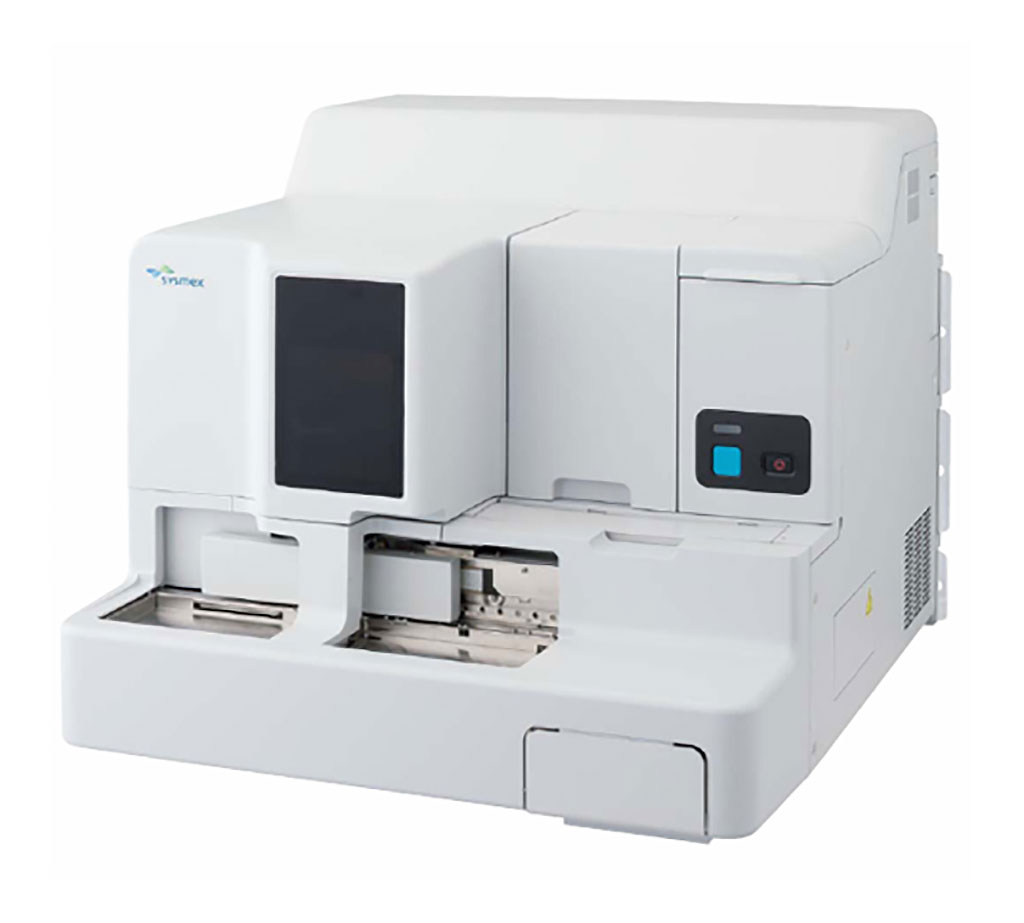Lupus Anticoagulant Prolongs Activated Partial-Thromboplastin Time in COVID-19
By LabMedica International staff writers
Posted on 20 May 2020
Patients with coronavirus disease 2019 (COVID-19) have a profound hypercoagulable state, and complicating venous thrombotic events are common. Abnormalities in coagulation screening measures, including a prolonged activated partial-thromboplastin time (aPTT), have been reported in patients with COVID-19.Posted on 20 May 2020
A prolonged aPTT may indicate a clotting-factor deficiency or the presence of an inhibitor of coagulation that is either specific such as antibody to factor VIII or nonspecific such as lupus anticoagulant. Lupus anticoagulant can affect in vitro tests of blood coagulation, but typically is not associated with bleeding. As part of the antiphospholipid syndrome, lupus anticoagulant is associated with a thrombotic risk.

Image: The CS-2400 is a high performance coagulation station that allows laboratories to perform routine and specialized testing including platelet function tests (Photo courtesy of Sysmex).
A team of Medical Scientists at the Royal London Hospital (London UK) and their associates investigated the cause of prolonged aPTT in 35 patients (median age, 57 years; 24 were male) with COVID-19 who were treated at the hospital. At the time of sampling, 21 patients were tested while in critical care, 10 were from in-patients or Emergency Department (ED) patients were admitted for >24 hours, and four were from ED patients who were discharged within 24 hours. Pulmonary embolism was confirmed in one patient, and clinically suspected thrombosis was present in one patient.
None of the patients had deficiencies in factor VIII or factor IX. In five patients, marginal reductions in factor XI were found that were unlikely to be of clinical significance. The factor XII level was ≤50 IU/dL in 16 patients. Coagulation assays were performed on Sysmex CS-series analyzers (Sysmex Corporation, Kobe, Japan). Lupus anticoagulant (LA) screening assays were performed using Siemens LA1 reagent for dilute Russell’s Viper Venom Time (DRVVT, Siemens Healthineers, Erlangen, Germany), and Diagnostica Stago PTT-LA reagent (Diagnostica Stago, Reading, UK) for APTT.
Lupus anticoagulant assays were performed in 34 patients, and 31 (91%) were positive. The presence of lupus anticoagulant was indicated by two assays in 18 of the 34 (53%) patients, by DRVVT alone in seven (21%), and by lupus anticoagulant-sensitive aPTT alone in six (18%). All samples that were positive for lupus anticoagulant had a prolonged aPTT with a 50:50 mix (sample made up of 50% patient plasma and 50% normal plasma).
In a historical control cohort of 540 specimens received for lupus anticoagulant testing, 43 (8%) had an aPTT of ≥30 seconds, and 11 of the 43 (26%) were positive for lupus anticoagulant. The percentage of specimens that were positive for lupus anticoagulant was significantly higher among the patients with COVID-19 than in the control cohort.
The authors suggested that a prolonged aPTT should not be a barrier to the use of anticoagulation therapies in the prevention and treatment of venous thrombosis in patients with COVID-19. In their opinion, clinicians should not withhold use of anticoagulants for thrombosis while awaiting further investigation of a prolonged aPTT, nor should they withhold thrombolytic therapy in the face of a high-risk pulmonary embolism on the basis of a prolonged aPTT alone. The study was published on May 5, 2020 in The New England Journal of Medicine.














